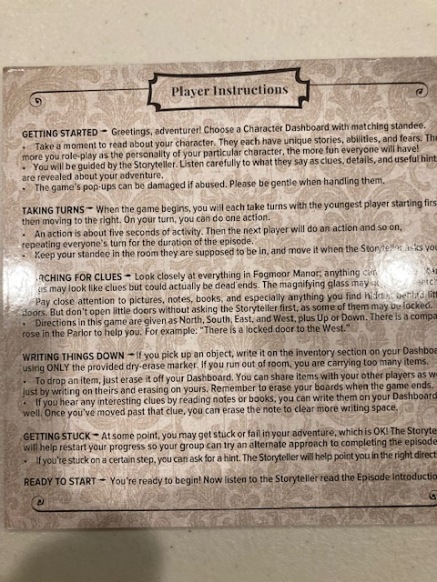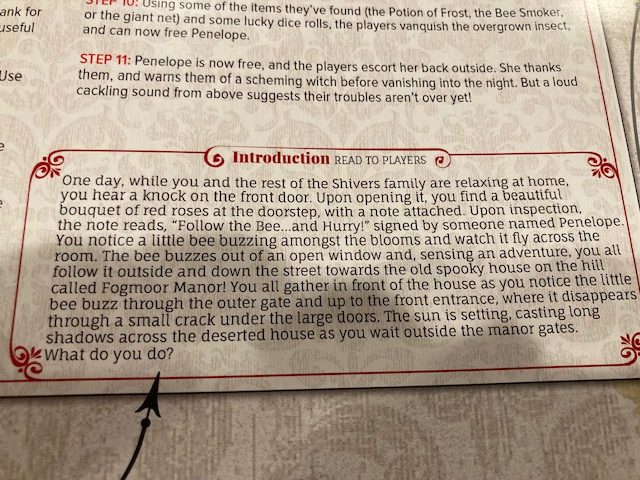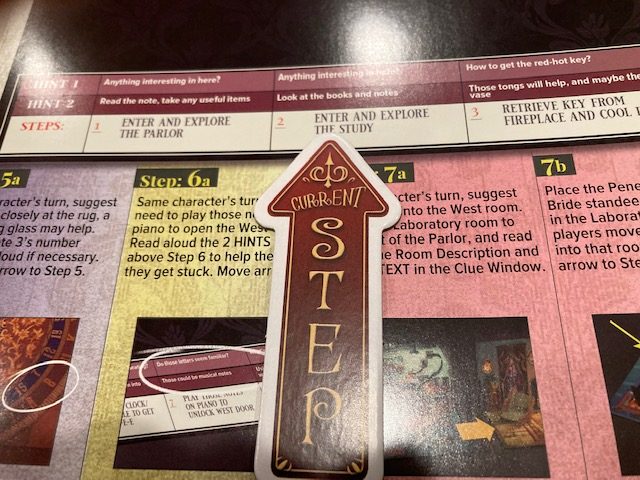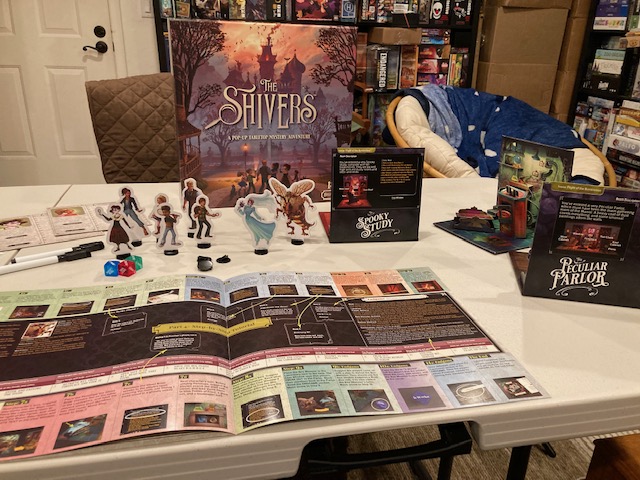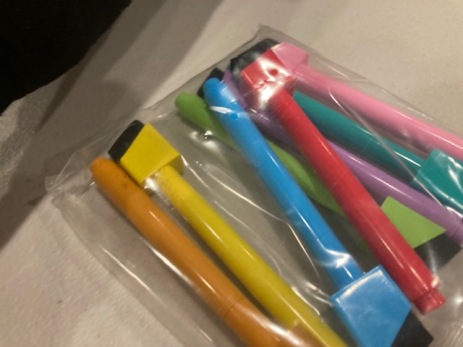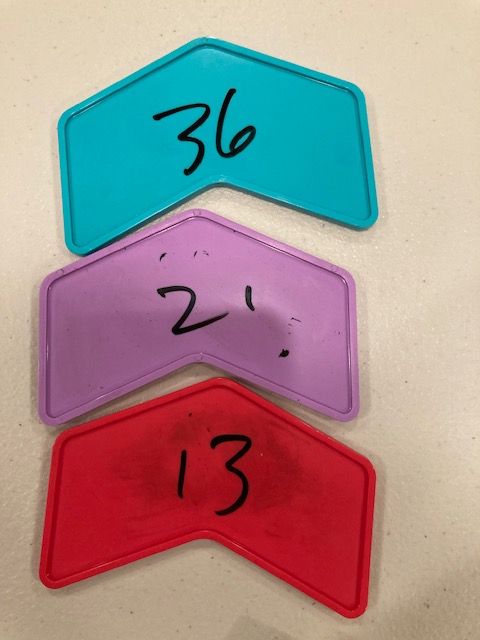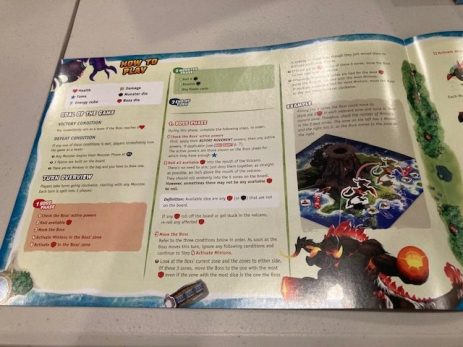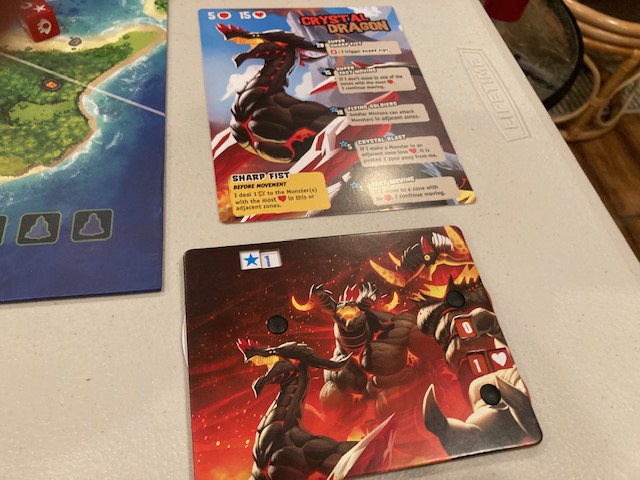What a great year 2022 has been for cooperative board and cards games! We have reviewed about 50 cooperative games and expansions here at Co-op Gestalt over the course of 2022! Wow! And we still missed a bunch of games we want to play! Weirdly, I don’t think we saw many of the games that we like on other people’s top 10 list! Apparently, our taste is unique! So, let’s take a look at our favorite cooperative games of 2022!
Honorable Mention. Sentinels of The Multiverse: Definitive Edition

Plays Solo: Yes (but you have to play 3 heroes)
Player Count: 1 to 5 (best at 3)
Ages: 14+
Length: 30-60 mins
We have to give a shout-out to one of our favorite games of all time: Sentinels of the Multiverse. This year, Greater Than Games released the newest version, called the Definitive Version! This new version replaces and obsoletes the Second Edition (which has been around for some time). See the new version below!

The art and components are better, the gameplay has been smoothed out, and it’s a great evolution of a great game!

This game gets a 10/10 for us. So why is it an Honorable Mention? The problem: I have already invested pretty heavily in the Second Edition of the game! I know the original cards so well (the heroes, the villains, the environments) that I don’t want to “throw away” that knowledge and start over in the new universe! See my investment below!

So, if you are starting fresh, I would highly recommend the Sentinels of the Multiverse: The Definitive Edition! But, if you are like me and my friends, who have invested pretty heavily in Second edition and want to stay there (For example:we played tons Sentinels of The Multiverse Second Edition at RichieCon 2022!), we can only give this an Honorable Mention. See our review here for much more discussion of the game and which version you may want. There is a reason this is #1 on our Top 10 Cooperative Superhero Games!
10. Batman: The Dark Knight Returns

Plays Solo: Yes
Player Count: 1 to ?? (it really a solo game, but multiple people can make decisions together as a solo unit)
Ages: 14+
Length: 90 mins per session (there are exactly 4 sessions)
Strictly speaking, this is a solo game, but you can play it multiplayer either as a 1 vs. 1 game, or “solo with many people”. The solo player (or multiple players) takes the role of the Dark Knight from the Frank Miller masterpiece The Dark Knight Returns and plays out each of the four issues as Batman. Your goal is simple: to survive all 4 issues!

This game caused a lot of existential crises for us: The Dark Knight Returns forced us to think about how to Resolve Ambiguity in Cooperative Games! It also forced us to confront the idea that just surviving is okay for a cooperative game.

Strictly speaking, this is a solo game. With some handwaving, you can play this with multiple players, but it is best solo, which is why it is only at number 10 for 2022. See our review here. 2022 was a very good year for Superhero games … keep reading!
9. Eila and Something Shiny

Plays Solo: Yes
Player Count: 1-3 (it’s really multiplayer solo, with everyone making decisions together)
Ages: 8+
Length: 30-45 mins per session (the game is a campaign over many sessions)
If you are surprised about this one, so are we! Eila and Something Shiny just enchanted us! It also surprised the heck of us with its interesting ideas and straight-forward gameplay. It is also a campaign game! My game group wanted to bribe me (with doughnuts) to keep playing this because it was so cute and so fun! The little comics/stories that came with the game were surprisingly emotional, and they even caused us to feel real human emotions.
 Even though this is obviously aimed at a younger audience, Eila and Something Shiny took our game group by storm. If you’d like to find out more abut this game, check out our review here.
Even though this is obviously aimed at a younger audience, Eila and Something Shiny took our game group by storm. If you’d like to find out more abut this game, check out our review here.
Eila and Something Shiny is a fun game that the whole family can enjoy.
8. Legends of Sleepy Hollow

Plays Solo: Yes (but you have to play all 4 characters! It’s very difficult to play solo!)
Player Count: 1-4
Ages: 14+
Length: 30-120 (depends on the scenario you play)
This game was #2 on our Top 10 Anticipated Games of 2022! There have been some production problems (which Greater Than Games have addressed) and some rules problems, but this campaign adventure game is so thematic, it’s easy to forgive some of the flaws.

This game is a campaign, exploring the world of Sleepy Hollow and the Headless Horseman. The components and art and unique and creepy, the story is really thematic, and the game is just a unique romp. Each player plays a character in this world and upgrades in unique and different ways as the story progresses.

Despite some of the production flaws (some boards were hard to read), the theme and story just oozes out out this game. See our review here to see if you would like to enter the world in Legends of Sleepy Hollow!
7. Minecraft: Portal Dash
Plays Solo: Yes (no real changes to play single solo: works well)
Player Count: 1-4
Ages: 10+
Length: 60 mins
Minecraft: Portal Dash is a huge surprise of the this year! I didn’t expect to like this game as much as I did: It’s a solid cooperative game and plays in about 60 minutes. Although some of the graphic design won’t win any awards, it does look like Minecraft, which will probably appeal to a lot of people!

What really sold us on this game was the cube structure: they way the cubes interacted with the rest of the game was so interesting!

I know, it sounds weird that we liked this game so much, but take a look at our review here to see if you might like it too!
6. Agents of SMERSH: Epic Edition
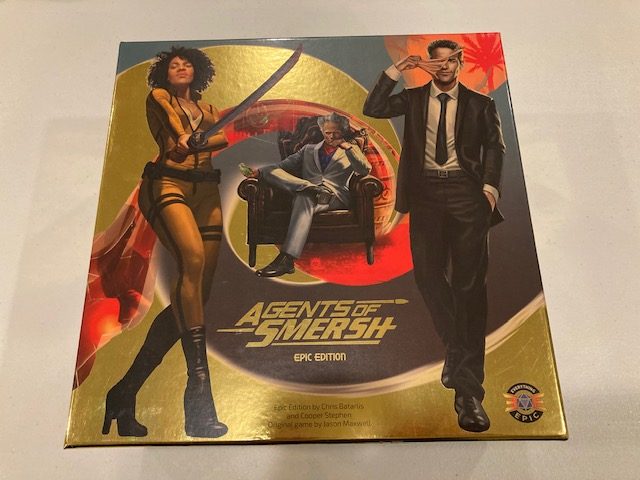
Plays Solo: Yes (as a single character, no multiple characters needed)
Player Count: 1-4
Ages: 14+
Length: 90 mins
Agents of SMERSH: Epic Edition is the Second Edition, a major reworking and simplification of the original Agents of SMERSH game. Agents of SMERSH: Epic Edition is a storybook game, where players roam the map doing “secret agent” type things. It’s got a sense of humor, but if you want a silly storybook game with lots of reading and some fun dice-rolling, this is a great game.

The components for this are amazing!

The original Agents of SMERSH was in our Top 10 Cooperative Storybook/Story Telling Games, and the new version has replaced it for us! The new edition is streamlined, has better components, looks better, and concentrates on the funner parts: reading and rolling. See our review here to see if you would be interested in this!
5. Star Wars: The Clone Wars (A Pandemic System Game)

Plays Solo: Yes (alternate between 2 characters)
Player Count: 1-5
Ages: 14+
Length: 60 mins
Although Star Wars: The Clone Wars is a Pandemic game, it has really evolved the rules so that the game melds with the Star Wars theme quite well! There are a lot of new innovations to the Pandemic system that make this quite fun and unique! It’s not just “Yet Another Pandemic Game“, but a unique entry into the Pandemic lexicon!

Each player takes a character from the Star Wars mythos and operates them, moving around the board, and working together to take down one of the evil bad guys from Star Wars!

We were worried this would be “nothing new”, but Star Wars: The Clone Wars was an interesting and fun evolution. If you like Star Wars or Pandemic, this is a great cooperative game. See out review here!
4. Suspects
Plays Solo: Yes
Player Count: 1-6 (probably best at about 3 or 4)
Ages: 10+
Length: The box says 90 minutes per mystery (there are 3 mysteries in the box). This is about right, but it depends on how much your group thinks (it’s not a timed game)
We love cooperative Detective games here at Co-op Gestalt, and Suspects gave us a fresh perspective on the cooperative Detective game. Suspects is mostly a card game, where the mystery is revealed from the cards as more and more if them are revealed. There are exactly three Detective Mysteries in the box, and once you’ve solved them, the game is done! (You can still reset it and give it someone else)

Suspects played well solo, and it played well in groups of 3 or 4. It was such a hoot going through the adventures! After I finished all three mysteries, I passed it onto Charlie and Allison who proceeded to finish it quickly as well! We all loved it!

This game would easily make our Top 10 Cooperative Detective Games! Check out our review here of Suspects to see if this is something you would enjoy!
3. Paperback Adventures
Plays Solo: Yes (primarily a solo game actually)
Player Count: 1-2 (the cooperative game works really well at two)
Ages: 14+
Length: The box says 90 minutes, we it seemed more 2+ hours
I must say, any of the next 3 games could have been my top game of 2022. I really liked Paperback Adventures a lot more than I expected! This is primarily a word game where you battle monsters using your words! This is a deck-building game as well, as you buy letters on cards to build better words!

The components were absolutely outstanding (these were some of the best sleeves I have ever seen), except for the plastic trays didn’t quite work. Overall, I had fun battling the monsters by making words!

I was also surprised how well the cooperative game worked for Paperback Adventures!! Sara and I had an amazing time playing this two player cooperatively. See our full review here to see why we liked this so much! I think the only reason it didn’t make the number 1 spot for this year is that the cooperative mode is limited to only 2 players: if it played a few more people, it might have made our #1 spot for 2022!
2. Hour of Need
Plays Solo: Yes (and plays well with just a single character)
Player Count: 1-4
Ages: 14+
Length: 30-120 (really depends on the adventure you choose)
So, this could have easily been my #1 game of the year for 2022: I spent so much time playing it! I even some time pimping it out with bases for the miniatures: see here! I love how this is the next evolution of the Sentinels of The Multiverse system, which is a game I adore! (remember our Honorable Mention) (Some people know this as the Modular Deck System).

This game has s lot of depth and fun! The pieces are outstanding! The game has theme and story everywhere! There are so many good choices everywhere in the game! I feel like a superhero when I play this game.
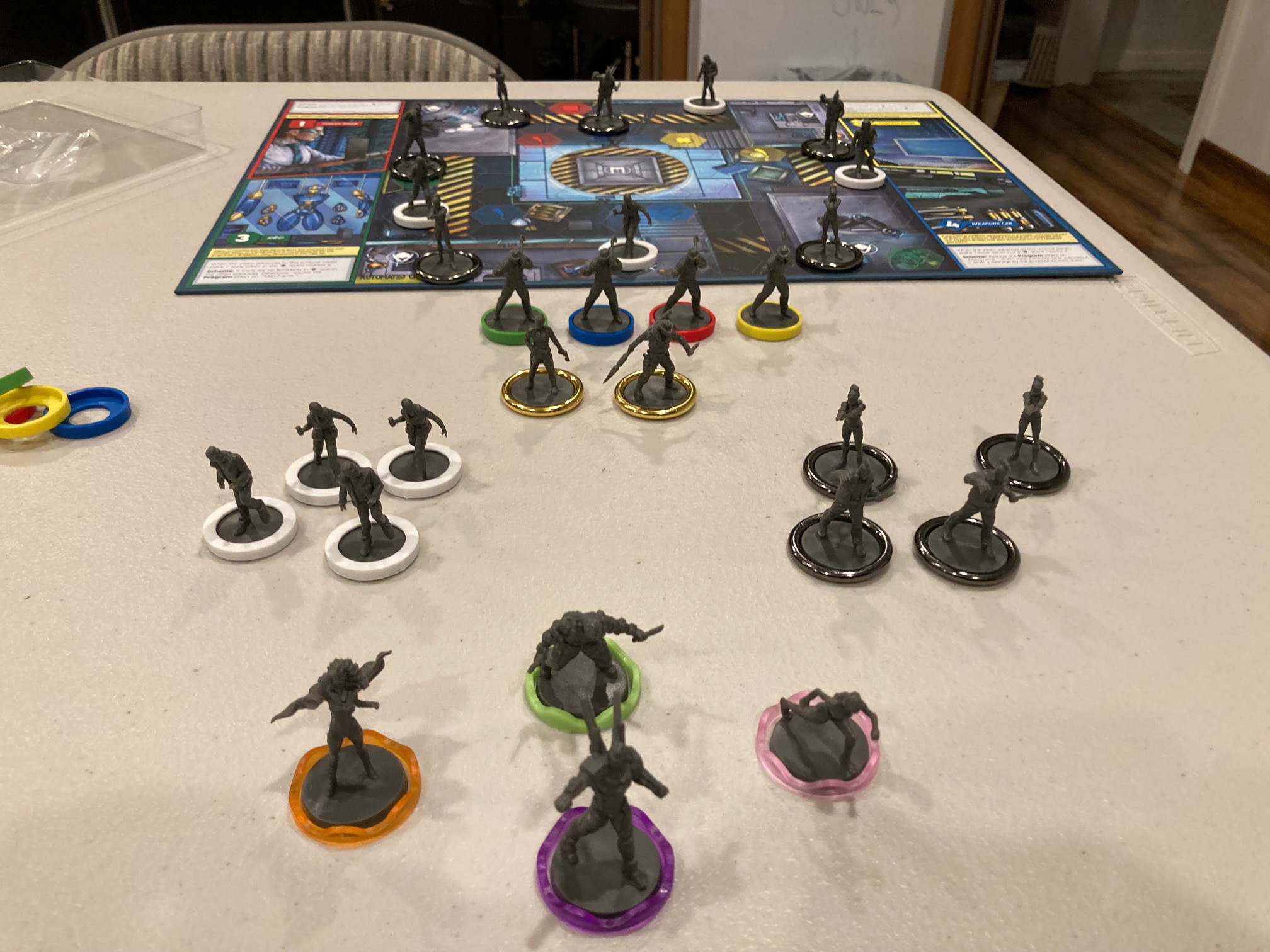
As much as I love this game, I think its complexity can turn off some players, which is why I put it at #2. But I love this game: see my review here to see if you will too. Hour of Need could easily be in out Top 10 Cooperative Superhero Games! 2022 was a very good year for Superhero games!
1. Tokyo Sidekick

Plays Solo: Yes (but you have to play two superhero/sidekick teams: it also needs a house rule)
Player Count: 1-4
Ages: 12+
Length: 45-60
I love Tokyo Sidekick! The game is so great for so many reasons! The art and standees are amazing! The rulebook is one of the best rulebooks I have seen! The gameplay has so many cool elements! The cooperation is very pronounced! The game has so many choices! The amount of upgrading you do as you play makes the game that much more fun! The game just looks so cool on the table!

I think the Acrylic standees (which were an optional buy) have made me think that miniatures are outdated!

The game is unfortunately a little flawed at 1 or 2 players: it’s a too hard. We discuss a very simple house rule to make the solo/two-player game much more fun: see our review of Tokyo Sidekick here! Despite this minor flaw, I can’t think of any game I’d rather get off the shelf and play: this is the one I keep wanting to play! That’s what makes it our number 1 of 2022!

2022 was a very good year for Superhero games. Tokyo Sidekick would easily would make our Top 10 Cooperative Superhero games!
What a wonderful year 2022 was for games! Thanks for reading our Top 10 list!



















